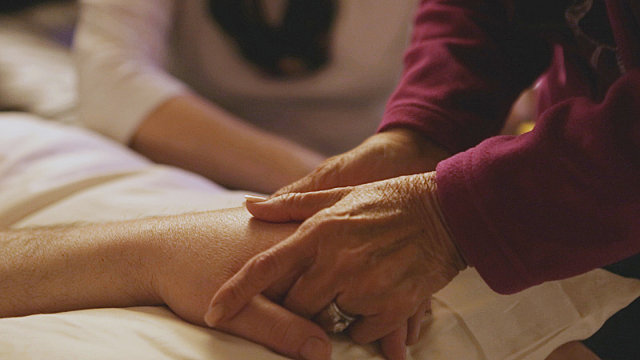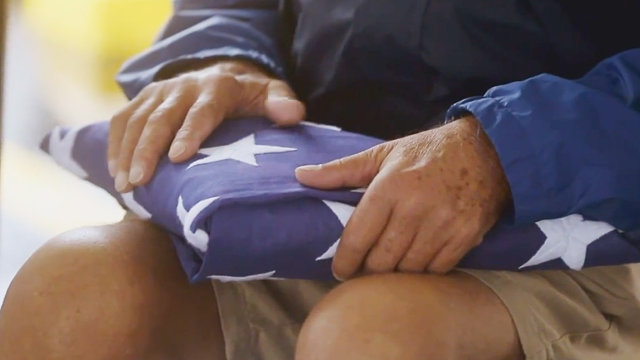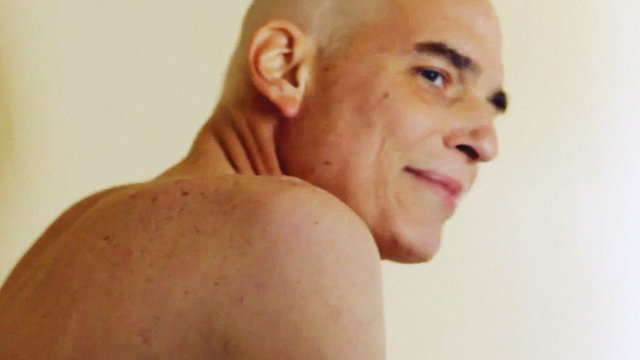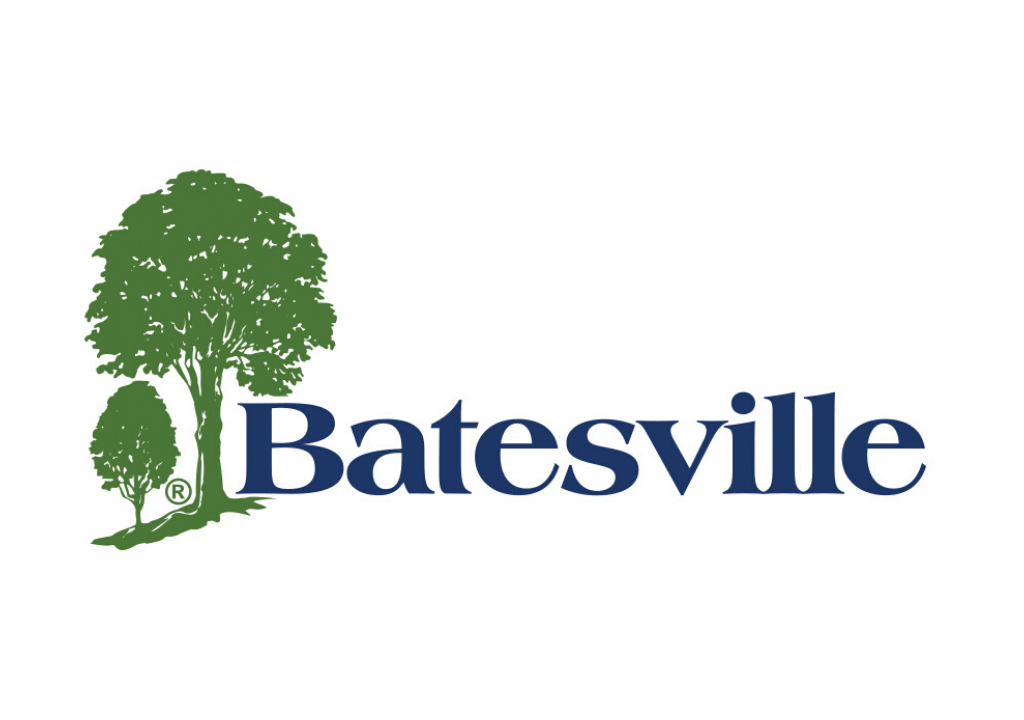The Most Real Death Related Reality Show No One Is Talking About
Magical Elves co-founders and executive producers Jane Lipsitz and Dan Cutforth reflect on the making of the Showtime documentary series Time of Death, which follows six terminally ill people through the final weeks of their lives.
Crews that shoot documentaries tend to maintain a certain distance from their subjects for fear of becoming too emotionally attached or somehow interfering in the situations they are chronicling. But how do you stay detached when you are spending weeks and months with people who are dying, and their families, friends and caretakers, too?
It’s impossible, of course. “Inevitably, there were a lot of dilemmas for the teams that were in the field,” says Jane Lipsitz, co-founder of Magical Elves and one of the executive producers of Time of Death. Premiering on Showtime November 1, the six-part documentary series follows a group of terminally ill people–including Nicolle, a 19-year-old with melanoma, Lenore, a 75-year-old psychotherapist with pancreatic cancer (who actually spent her career counseling others on how to deal with death) and Cheyenne, a 47-year-old former mixed martial arts fighter in the advanced stages of ALS–coping with their imminent mortality.
“I’m really proud of the job they did because they had to walk a very difficult line all the time,” Lipsitz says of the Time of Death crew. “They had to not just be respectful and get their job done, but at the same time, they were becoming part of the inner circle themselves, and it is very hard to remain completely dispassionate in these situations, and nor should you, really.”
Co.Create spoke to Lipsitz and fellow Magical Elves co-founder and Time of Death executive producer Dan Cutforth to find out how they prepared their producers, camera operators, and editors as well as themselves to embark on such an intense project–Time of Death is notably different fare for a company best known for fun reality series like Project Runway and Top Chef–and to get a sense of how they see death now that they have been immersed in the lives of people who had no choice but to confront it.
Co.Create: I screened all six episodes of Time of Death in one day. I couldn’t stop once I saw the first episode. That was a week ago, and I keep thinking about the people I met, including Maria, the single mom who had breast cancer and a rocky relationship with her teenaged kids, and her eldest daughter, Little, who was committed to raising her half-siblings after her mom’s death. Their story was compelling, though especially hard to watch. But there were moments in other stories that were comforting. I found a dead body when I was a teenager. He was a friend of the family’s, and he didn’t die a peaceful death. Time of Death reminded me that there are people who do have some measure of control over how they die, and that, for me, was good to see. I can’t remember the last time I watched something on television that affected me like this, and, overall, the impact was positive.
Lipsitz: Well, first of all, that’s really touching to hear that that’s how it affected you because that’s how we’re hoping people walk away; that people can’t stop thinking about it. Not that many people have seen it so far, but people who have say, ‘It’s powerful, and I cried through the episode.’ Also, a lot of people relate to it in terms of how they personally experienced death in their lives, so I think that it has different meanings for different people.

After watching all of the episodes, I also found myself thinking about the crew members embedded with the families featured in the series. Did you do anything to get everyone ready for what they would experience before you began shooting this project? I can’t imagine sending them into these situations without some preparation and support.
Lipsitz: When we first started working on this, we had a production meeting with Laurel [Lewis], who is the hospice worker in episode two. She had us go around the table, and she asked everyone, ‘How is your experience with death? What has it been?’ And we heard stories from everyone, things we didn’t even know about people who had lost their parents at an early age–these were co-workers that we’ve worked with, some people for eight, nine years, and we didn’t know these things. Everyone was crying. It was this very intense emotional experience that we had with our co-workers, and that was right in the beginning of the production, so we knew that this was going to be a really powerful experience.
Once you went into production, were there people on the crew who couldn’t make it all the way through the project because it was too hard for them to handle?
Lipsitz: People had to take breaks, particularly people who were embedded in the families and the editors because they were spending so much time with the footage. There were a couple of field producers who just said, ‘I need to take a break and go work on Top Chef.’ It was a really intense experience, which is why we actually had Laurel come in and do counseling sessions that people could access once a week.

Before you began working on Time of Death, was death something you thought about a lot, or was it something you tried not to think about?
Lipsitz: Well, I’m a hypochondriac, so I think I dealt with death but probably not in a healthy way. Doing this show and speaking to Laurel has definitely made me think about it in a more–I’m not sure how to describe it–in a more thoughtful way. It’s not as scary. I mean, it’s scary for everyone, but it’s not quite as scary in the same way when you see the strength of the human spirit and how people confront it and how their families confront it. I think that that’s what’s really inspirational about this series, and that’s how it’s affected me and a lot of the people who worked on it.
Cutforth: Death isn’t something that I think about a great deal. But in the five years leading up to making this show I went through the death of my mother-in-law, who I was very close with and who lived with us for quite a long time, and then my teenage cousin died very suddenly in mysterious circumstances a couple of years ago. So I had dealt with the death of two people close to me, and I found both experiences were obviously very upsetting and tragic. But I also felt like I learned something about how I felt about death from those experiences, and the thing that I found so fascinating about making this show was the different responses that different people have when faced with their own mortality and faced with the mortality of their loved ones. That was something that I thought was really fascinating to explore in the show.
Lipsitz: I think before the show I thought about death obsessively. I mean, internally. And the thing that this show makes you do is talk about it and confront it in a different way. What is it going to look like? Who’s going to be around you? And so the end message is, and, again, why we wanted to do the show, is America needs to talk about death. It’s one of the cultures that hides and steers away from the subject more than any other culture, and talking about it and talking to other people about it and talking to your friends and your family about it is a really healthy thing and makes it less scary.

We routinely see people killed in all sorts of horrible ways for our entertainment on television and in movies and in video games, but we don’t often see real, natural deaths occur in front of our eyes like we do while watching Time of Death. Why did you decide–and I assume there might have been some debate about this–we should witness those final moments?
Lipsitz: I think it was crucial to the series to see that in certain stories. But we were very respectful of the family and the individual if that was not something that they were okay with. It’s not the desensitizing of death that you see on television generally in scripted shows and video games. This is a very real and important moment, an important transition.

It’s remarkable that people agreed to take part in this series. Some people don’t even want friends and family to see them in their last moments let alone strangers. Why do you think the terminally ill people featured inTime of Death said yes to being a part of this?
Cutforth: Everyone had different motivations and different reasons why they felt not just comfortable with this but why they wanted to share their stories, but I think that everyone recognized how little information there is out there about how to cope with this kind of experience, and they were starting to understand how little people really talk about the issues around death, and they wanted to be able to do something positive and leave some positive message. Do you agree with that? [He asks Lipsitz.]
Lipsitz: Yeah, I think some people needed it for a catharsis, and some people needed to do it because they wanted a legacy. I do believe that everyone felt that they were doing this to help other help people to understand what the process was like and to have people talk about it.
I’ve explained the premise of Time of Death to a few friends, and just about everyone says, ‘Why would you want to watch that?’ What do you say to people who hear about this series, assume it is going to be nothing but scary and depressing and decide to avoid it?
Cutforth: I am glad you asked that question. I completely understand that reaction. But I think what we want people to understand is that it’s not just a show about death, it really is a show about life, and it’s life affirming. Anyone who has been through the experience of dealing with loss knows that it does change the way that you look at life, and it can change the way that you look at life in a really positive way. We see it as a celebration of life, not wallowing in death.
Lipsitz: We’re really grateful to Showtime. It’s a really brave series to make, and we hope that people are brave in watching it and understand that, like Dan said, you walk away feeling, hopefully, inspired by it and grateful for your life.
Has working on Time of Death impacted how you live your lives? Do you do anything differently now?
Lipsitz: For sure. I feel like you can’t watch the show and not think about life and how you want to live your life. The one thing that we observed in all of these stories is that you die as you live, and that really makes you think about the way you live and who you connect with. Taking extra moments to spend with your children or your husband or your friends, and connecting with your parents–that was my experience. I just found myself just taking more of a moment in the day to think about all of that.
Cutforth: I remember when we first talked to Showtime about this idea. They were really intrigued by it, and we did some casting so to speak. We went out to try and find some stories to see whether people would even give us access to that moment in their lives, and I think the first thing that I saw was Maria’s story, and I was just bowled over by how powerful it was and the reaction that I had to it. I remember saying there was no doubt in my mind that the show was going to happen and that it would be one of the projects that we would be most proud of. It’s not very often that something really affects to you in a deep meaningful way, and this show really did. It made me very conscious of my family and of the people who are important to me in my life and making sure that I cherish every moment I have with them.
[Photos and video courtesy of Showtime]
Source: FastCoCreate.com



